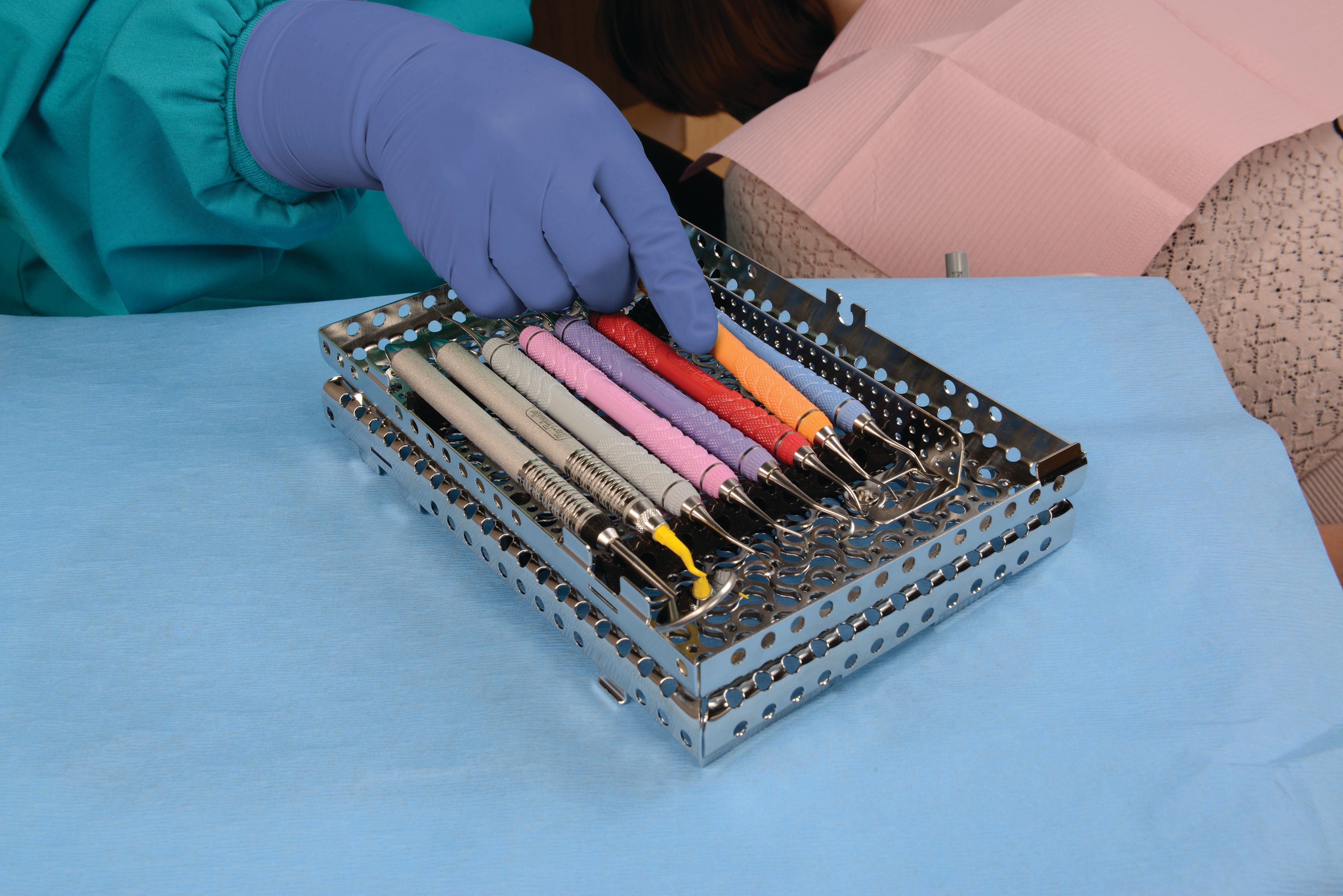The List: Top 3 Tips for Organizing and Sterilizing Your Instruments
Following these tips is a great way to improve organization and sterilization for your instruments, but that’s just the start.

By now, we’re all used to the familiar refrain that COVID-19 has created a “new normal” in dentistry, but when it comes to instrumentation, the “new normal” is actually more of a blast from the past. That’s because with the CDC guidance to “avoid aerosol generating procedures whenever possible,” clinicians are increasingly returning to traditional hand scaling techniques. With the use of hand instrumentation on the rise, it’s more important than ever to have a safe and efficient process for organizing and sterilizing your instruments.
Without a proper system in place, instrument reprocessing can create an excessive burden on practices. Whether it’s the price of replacing broken or missing instruments, liability from sharps injuries, lack of compliance with infection prevention regulations, or simply falling behind on your daily schedule and causing patients to wait, there’s a real cost to improper maintenance of your instruments.
Thankfully, there’s an established method for instrument reprocessing using instrument management systems like the IMS™ Cassette from HuFriedyGroup. Yet, even with the right systems in place, it’s still important to understand the nuances behind the process. So, without further ado, here are three tips for organizing and sterilizing your instruments:
1. Invest in an Instrument Management System
Simply put, adopting an instrument management system is the easiest way to improve organization and sterilization of instruments. Cassette-based systems keep instruments organized from chairside to storage, so instruments aren’t lost or broken between procedures. Additionally, most systems, like the IMS Cassettes from HuFriedyGroup, are designed so instruments can be disinfected, cleaned, and sterilized without having to remove them from the cassette. This not only streamlines reprocessing, but also reduces the risk of sharps injuries because hygienists and assistants no longer have to handle loose contaminated instruments. In a recent survey conducted by HuFriedyGroup, 84% of IMS Cassette users agreed that adopting an instrument management system increases efficiency and saves time, while 94% agreed it improved organization.1 If your practice does not use an instrument management system, this is the first step to improving the organization and sterilization of instruments.
2. Review Your Steri-Center Set-Up for Optimal Flow
The steri-center is a critical space for any practice, but as a “back-of-house” area, it may be cluttered, cramped, or generally not given the same attention as patient-facing spaces. As recommended by the CDC, steri-centers should flow from receiving and cleaning, to packaging, to sterilization, and then storage. When the space is designed to follow the proper flow of instrument reprocessing, it not only saves time and improves clinical efficiency, but also decreases the risk of cross-contamination by keeping processed, sterilized instruments away from dirty, unprocessed instruments.
3. Empower an Infection Control/Prevention Coordinator
In dentistry, ensuring a compliant practice is a team responsibility, but having a knowledgeable Infection Control/Prevention Coordinator (ICPC) to organize efforts is a major bonus. Instrument management, of course, is a critical component of infection prevention, and the ICPC can help develop and implement solutions like an instrument management system while confirming that team members are following the appropriate Instructions for Use (IFUs) for all disinfectant products and sterilization equipment. ICPCs can also run point on sterilization monitoring to ensure sterilizers are working properly while keeping test records for compliance.
Following these tips is a great way to improve organization and sterilization for your instruments, but that’s just the start. With proper systems in place, it’s not just about saving time for staff or reducing costs from broken or missing instruments. That matters of course, but this is also critical to infection prevention, and patients will appreciate the extra effort.
